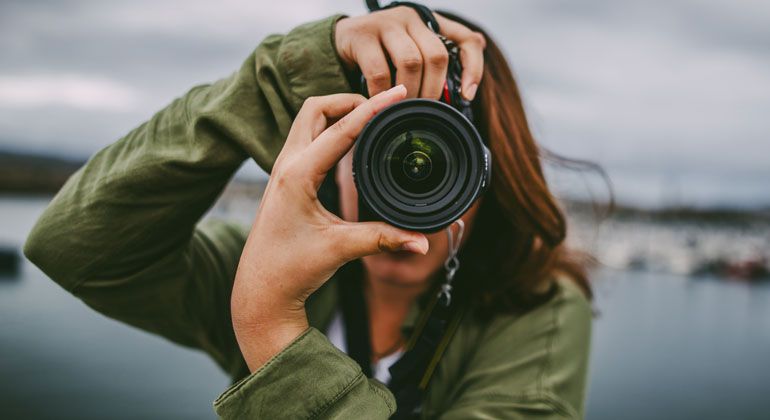Fictitious entrepreneur Balz Hasler needs a cover image for his product catalogue. With a Google search, he finds the desired photo within a few minutes and immediately downloads it. "The internet makes things so much easier," he says happily and sends the picture to the print shop. Shortly after the catalogue is published, however, things get complicated – an attorney’s office has sent him a bill. The company director had made a mistake in using the photo. It’s protected by copyright, so he should have asked the copyright holder for permission. Here are some points Mr Hasler, and you, need to consider if you want to use an image.
For IP professionals
This is the portal for professionals working in the field of intellectual property. Here you'll find direct access to all necessary resources.
Quick links
Need photos for your SME? Here’s how to do it right
Due to a revision all photos are now protected by copyright in Switzerland. This also has implications for companies. We take a look at what SMEs should pay attention to when using images.

The basics
Follow these principles:
- Photographs are protected by law.
- So it is best to use your own pictures whenever possible.
- Every time you use someone else’s photos, you must obtain permission from the copyright holder.
Do you have photos from your own private archive? You are free to use photos that you took yourself. Or, you can hire a professional photographer to capture your company on film. With a corresponding contract, the right to use the images will be transferred to you. The same applies if you want to use photos taken by employees. In an agreement, define when, where and how the images may be used.
For reasons of proof, agreements on the use of third-party images should always be made in writing (email confirmation is sufficient). If an agreement has only been made orally or if nothing has been agreed and a legal dispute arises, a judge will have the final decision – with an uncertain outcome.
Images from the internet
Another option is to visit image database websites. Here, you can buy a specific licence for the desired image’s use. It’s important to look at the terms and conditions of the image database as you can often find that the database is not guaranteed to have the necessary rights to the images to license them (key words: T&Cs and possible insufficient rights). Carrying out a Google image search with the "Usage Rights" filter activated is also not a reliable source for images.
Images in a company PowerPoint presentation
The principles outlined above also apply for PowerPoint presentations. You can distribute a hand-out of the presentation with the image as long as this has been agreed with the respective rights holder. This is not permitted without direct permission/a licence.
Industry agreements permit the purely internal use of image material belonging to third parties in presentations and on a company's intranet.
Respect privacy rights
If you photograph employees for a brochure, company stock photos or the like, you should have each employee sign a user agreement. It is possible for an employee to revoke the agreement. However, if they have previously authorised the use of the image, they may be liable to pay damages. As a rule, privacy rights come into play as soon as a person is visible in an image. In this case, consent is required for the image to be taken in the first place and then also for the use of the image. Everyone must therefore give consent for the photo to be taken and used (key word: right to one’s own image).
Special case – image citation
An image citation represents a special case. If three conditions are met, the image may be cited (used) without permission from the copyright holder.
- Documentary function – the presentation must engage with the image in terms of its content.
- Scope – an image may only be used to the extent necessary for dealing with the content of the image . The cited image may be reduced or enlarged. You can also only use a section of the image.
- Source – an image citation must be marked as such and the source must be indicated. If it contains an author’s designation, this must also be indicated.
Further information on the subject: Protection for photographs
